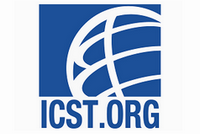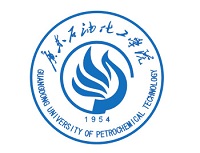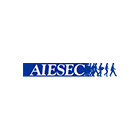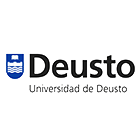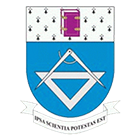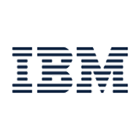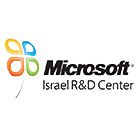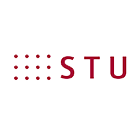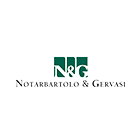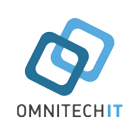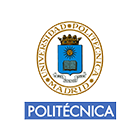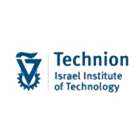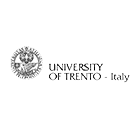================================================================================ 9th International Conference on Communications and Networking in China - ChinaCom 2014 August 14th-16th, 2014 Maoming, China www.chinacom.org ================================================================================
HIGHLIGHTS
- Chinacom 2014 will feature keynote speeches given by:
Prof. Vincenzo Piuri, IEEE Fellow, Università degli Studi di Milano, Italy
Prof. Nei Kato, IEEE Fellow, Tohoku University, Japan
Prof. Hanna Bogucka, Poznan University of Technology, Poland
- Chinacom 2014 will offer several workshops (number to be finalized); see website for further information and calls for workshop papers.
- All accepted and presented papers will be included in the ChinaCom 2014 Conference Proceedings, and will be submitted for inclusion in IEEE Xplore and EI Compendex..
- Top papers will be recommended for publication in the special issues of MONET and SCN (SCI indexed) after further extension.
- Selected papers will be considered for publication in:
- EAI Endorsed Transactions on Industrial Networks and Intelligent Systems
- EAI Endorsed Transactions on Energy Web
- EAI Endorsed Transactions on Complex Systems
- EAI Endorsed Transactions on Internet of Things
- The Organizing Committee will select the best papers of each symposium and present the authors with best paper awards during the conference.
- The event is endorsed by the EAI, a leading community-based organization devoted to the advancement of innovation in the field of ICT.
- The conference will be held in Maoming, the oil city of the south with beautiful landscape in mainland China, from 14-16, August, 2014.
CALL FOR PAPERS
[Scope] ChinaCom is endorsed by the European Alliance for Innovation (https://eai.eu/), a leading community-based organization devoted to the advancement of innovation in the field of ICT. The aim of ChinaCom is to bring together Chinese and international researchers and practitioners in networking and communications under one roof, building a showcase of these fields in China. ChinaCom is being positioned as the premier international annual conference for the presentation of original and fundamental research advances in the field of communications, networks, and internet applications. The conference will consist of technical symposia, panels, tutorials, and workshops. All submissions to this conference will be subject to rigorous peer review before included in the technical sessions.
[Submissions] Please refer to https://chinacom.org/show/initial-submission for further information on submission format and requirements.
[Publication] All accepted and presented papers will be included in the ChinaCom 2014 Conference Proceedings, and will be submitted for inclusion in IEEE Xplore and EI Compendex. Papers accepted and presented in ChinaCom2006-2013 have been indexed by EI entirely. Selected best and outstanding papers will be considered for publication in special issues of SCI-indexed Journals MONET and SCN after further extension as well as EAI Endorsed Transactions on Industrial Networks and Intelligent Systems
We reserve the right to exclude papers accepted but not presented from the conference proceedings submitted for archiving and indexing.
[Keynote Speakers]
Prof. Vincenzo Piuri, IEEE Fellow, Università degli Studi di Milano, Italy
Prof. Nei Kato, IEEE Fellow, Tohoku University, Japan
Prof. Hanna Bogucka, Poznan University of Technology, Poland
[Important dates]
- Extended paper submission deadline: April 30, 2014
- Author notification: June 20, 2014
- Camera-ready: July 1, 2014
Ad-hoc and Sensor Networks
- Access Control
- Ad Hoc networks of autonomous intelligent systems
- Analytic methods and modeling for performance evaluation
- Ad hoc network applications and architectures
- Delay-tolerant networking
- Distributed algorithms for ad hoc networks
- Geometric graphs
- Location discovery and management
- Mobile ad hoc computing platforms, systems and test beds
- Mobile social networking
- Quality-of-service
- Routing protocols (unicast, multicast, etc.)
- Sensor networks
- Self-configuration
- Service discovery
- Timing synchronization
Information and Coding Theory
- Coding theory and practice
- Communication theory
- Data compression
- Signal detection and estimation
- Information theory and statistics
- Network communication theory
- Multiple terminal information theory
- Quantum information theory
- Sequences and complexity
- Channel capacity
- Joint source and channel coding
Signal Processing for Communications
- Adaptive signal processing
- Multi-rate signal processing
- Array Signal Processing
- Blind Signal Processing
- Signal detection and synchronization
- SIMO, MISO, MIMO precoder/decoder design
- Smart antenna beamforming and DOA estimation
- Radar signal processing
- Distributed/centralized algorithms for communication systems
- Statistical signal processing
- Spectral analysis and estimation
- System level optimization
- Cross-layer optimization
- Software defined and cognitive radio
- Compressive sensing and compressive sampling
- Space-time processing and decoding
- Channel estimation, equalization and modeling
- Localization and positioning techniques
- Signal processing in LTE/LTE-A/IMT-A and other emerging systems
- Signal processing for security and cryptography
Wireless Communications and Networking
- Antennas, propagation and channel modeling
- Modulation, coding and diversity techniques
- Equalization, detection and estimation
- Multiple antenna and multicarrier technologies
- Multiple access techniques
- Wireless air interference and link control
- Multimedia communications and QoS
- Radio resource management and interference control
- Network architecture and planning
- Wireless ad hoc and mesh networks
- Vehicular networks
- Bluetooth technologies and applications
- Body area networks
- Heterogeneous networks and systems
- Ultra-wideband communications (UWB)
- Radio frequency identification (RFID)
- LTE, LTE-Advanced and 4G
- WLAN/WPAN and mobile Internet
- Wi-Fi and WiMAX
Green Communications & Computing
- Green computing models, simulations, designs
- Energy-efficient networking and computing infrastructures
- Energy-aware resource allocation and scheduling mechanisms
- Green materials and devices design
- Usage of renewable energy for green ICT operation
- Cross-layer optimization of green networking infrastructures
- End-to-end modeling and performance of green communication networks
- Communication networks for smart grids
- Energy efficient hardware, devices and designs
- Life-cycle analysis of computing equipment
- Energy harvesting, storage, and recycling
- Climate and ecosystem monitoring
- Energy-efficient data center and cloud technologies
- Cooperative theory and game theory for green communication networks
- Green high-performance computing and applications
- Realization of smart grids by the application of ICT
- Integration of distributed energy resources
Network and Information Security
- Security in cloud and grid systems
- Network security analysis and prediction technologies
- Network risk analysis and evaluation technologies
- Trusted computing
- Cryptography and data security
- Multilevel security system and technologies
- Denial-of-service attacks and countermeasures
- Wireless and pervasive/ubiquitous computing security
- Security for critical infrastructures
- Intrusion and anomaly detection and prevention
- Automated tools for source code analysis
- Malicious code analysis, anti-virus, anti-spyware
- Privacy-preserving (and compromising) systems
- Security and privacy in network
Multimedia Communications & Smart Networking
- Multimedia delivery and streaming over wired and wireless networks
- Cross-layer optimization for multimedia services
- Multicast, broadcast and IPTV
- Multimedia computing systems and human-machine interaction
- Interactive media and immersive environments
- Multimedia content analysis and search
- Multimedia databases and digital libraries
- Converged application/communication servers
- Multimedia security and privacy
- Multimedia analysis and social media
- Multimedia QoS provisioning
- Multimedia streaming over mobile social networks and service overlay networks
- Service creation, delivery, management
- Virtual home environment and network management
- Charging, pricing, business models
- Cooperative networking for streaming media content
- Ubiquitous computing services and applications
- Networked autonomous systems
- Communications software or applications of autonomous behavior in vehicular communications
- Web services and distributed software technology
- Software for distributed systems and applications, including smart grid and cloud computing services
- Peer-to-peer technologies for communication services
- Context awareness and personalization
- Wearable computing architecture,protocol or applicaiton based on wireless sensor etworks and Ubiquitous Network
- Smart networking for social networks and collaborative systems
- Intelligent application software architecture for Internet of Things
Optical Communications and Networking
- Optical network architecture, application, and services
- High speed, high spectral efficiency optical communication systems
- Optical switching technologies
- Backbone and metro-core networks
- Optical access network design and protocols
- Optical network survivability
- DWDM/CWDM transceivers and transponders
- Optical devices for switching, filtering, and Interconnects
- Optical communication performance monitoring
- Energy efficiency in optical networks
- Convergence of optical and wireless access networks
- Optical wireless communications
Communication QoS, Reliability & Modeling Symposium
- Quality in Multimedia Networks, including Voice over IP and IPTV
- Quality, Scalability and Performance in the Internet
- Quality and Performance in Wireless and Mobile Networks
- Quality, Reliability and Performance in Optical and Multi-Layer Networks
- Quality and Performance in Autonomic Systems
- Quality and Performance in Grid, Cloud and Distributed Computing
- Quality and Performance in Overlay (including Peer-to-Peer) Networks
- Quality and Performance for Network and Services
- Quality and Resource Allocation for Network Services, VPN, Web
- Performance Modeling of Next-Generation Networks
- Performance of Large Scale Experimental Platforms
- Scalability, Robustness and Resilience
- Standardization Aspects of QoS and Reliability
- Network Performance Evaluation Techniques
- TCP/IP Performance
- Design of Networks and Network Services
- Cross-Layer Design, Modeling and Optimization
- Application/Service Oriented Networking
- Network Simulation Techniques
- Network Modeling
- Network Measurement and Monitoring Techniques
- Resource Allocation for Networks and Their Services
- Traffic and Workload Modeling and Characterization
- Traffic and Workload Control
- Traffic Economics
- Traffic Engineering and Traffic Theory
- Metrics and Models for Quality of Experience (QoE)
Congnitive Radio and Networks Symposium
- Spectrum sensing, measurements and statistical modeling of spectrum usage
- Distributed cooperative spectrum sensing and multiuser access
- Dynamic spectrum accessing and sharing in unlicensed bands
- Waveform design, modulation, interference aggregation and mitigation for cognitive radio networks
- Cognitive medium access control (MAC), interference management,handoff and routing protocols
- Resource allocation for multiple-input multiple-output (MIMO)-based cognitive radio communications
- Distributed adaptation and optimization methods for cognitive radio networks
- Cross-layer optimization of cognitive radio networks
- Ranging and localization in cognitive radio networks
- Radio environment mapping for cognitive radio networks
- Architectures and building blocks of cognitive radio networks
- Energy-efficient environment-friendly cognitive radio communications and networking (green cognitive radio)
- Cognitive intelligent techniques (e.g., machine learning, transfer learning, information-theoretic learning, bio-inspired intelligence)
- Self-configuration, interoperability and co-existence issues
- Security and robustness of cognitive spectrum-agile networks
- Applications and services based on cognitive radio networks (e.g., cognitive networking in TV whitespace, cognitive femtocell & small cell networks, public safety networks, and vehicular networks)
- Cognitive radio standards, test-beds, simulation tools, hardware prototypes and implementation
- Regulatory policies and their interactions with communications and networking
- Economic aspects of spectrum sharing (e.g., pricing, auction) in cognitive radio networks
Communication Software, Service and E-Health Symposium
- Web Services and distributed SW technology
- Distributed systems and applications, including Grid Services and Cloud Services
- Home Network Service Platform
- Mobile Services and Service Platforms
- Service Creation, Delivery, Management
- Quality of Experience (QoE) for End-to-End Communications
- Context Awareness and Personalization
- Communications Software Engineering – Methods and Tools
- End-to-end Quality of Service software Routing algorithms
- Intelligent Network Management
- Service Security and Privacy and Authentication
- Charging, Pricing, Business Models
- Sensing of Vital Signs and Signatures
- Wearable Medical Wireless Sensors,
- Energy Saving for Long Time Monitoring
- In-Body Medical Sensors Communications
- Molecular Sensor Communications
- eHealth oriented Software Architectures (Agent, SOA, Middleware, etc.)
- Autonomic Diagnosis and Situation Awareness (Fall, Activity, etc.)
- Context Awareness and Autonomous Computing for AAL (Ambient Assisted Living)
- Health and wellness Measurement, Monitoring and Intervention
- Security, Trust and Privacy
- Usability and Acceptability
ABOUT EAI The European Alliance for Innovation is a dynamic eco-system for fostering ICT enabled innovation to improve European competitiveness and to benefit society. EAI uses open e-platforms to inspire grassroots collaboration among all relevant actors, from organizations to individuals, to stimulate community driven innovation to its institutional and individual members worldwide. Through EAI, organizations find ideas and talent, and individual innovators find organizations for their ingenuity and craft. Join the innovation community at [www.eai.eu ](www.eai.eu



